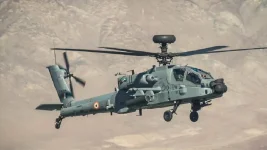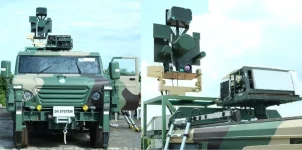- Views: 216
- Replies: 6
In a significant strategic pivot following the loss of the U.S. Air Force’s Next Generation Air Dominance (NGAD) contract, Lockheed Martin has announced a plan to substantially upgrade its F-35 Lightning II fighter.
The proposal aims to create a "fifth-generation plus" aircraft, offering a powerful yet more affordable alternative to true sixth-generation jets.
Speaking at Bernstein’s Strategic Decisions Conference on May 28, 2025, Lockheed Martin CEO Jim Taiclet stated that the enhanced F-35 would be available to new customers, with India being a notable potential partner.
The move is seen as a direct response to Boeing securing the lucrative contract to build the F-47, the new sixth-generation fighter for the U.S. Air Force.
With no immediate prospects for new sixth-generation fighter or bomber contracts, Lockheed Martin is focusing its resources on the F-35, its flagship program which has already delivered over 1,100 aircraft to various air forces globally.
The company plans to integrate technologies developed during its unsuccessful NGAD bid to keep the F-35 at the forefront of modern air power.
The proposed upgrade intends to deliver approximately 80% of the capabilities of a sixth-generation fighter at about half the cost. The enhanced F-35 is projected to cost under $150 million per unit, compared to the estimated $300 million price of the F-47.
These improvements are built upon the ongoing F-35 Block 4 upgrade program, which is already enhancing the jet's processing power, software, and weapons capabilities.
Key features of the upgraded F-35 platform include:
- Improved Stealth: The aircraft will feature new radar-absorbent coatings and potential modifications to its physical shape, such as to the engine inlets. These changes, derived from technologies developed for the NGAD competition, aim to reduce the fighter's visibility to enemy radar.
- Advanced Systems and AI: The jet will incorporate an improved digital architecture with artificial intelligence and superior networking capabilities. This includes better passive infrared sensors for detecting targets at long range without compromising its own position.
- Manned-Unmanned Teaming (MUM-T): The F-35 will be equipped to control and coordinate with uncrewed "loyal wingman" drones, also known as Collaborative Combat Aircraft (CCA). This technology, which is becoming central to modern air warfare strategy, multiplies the aircraft's effectiveness by using drones for tasks like surveillance, electronic warfare, and carrying additional munitions.
- Optionally Manned Capability: Taiclet revealed that the F-35 could become "pilot-optional" in a relatively short timeframe, leveraging autonomy software from the NGAD project. This would allow the jet to fly as an Unmanned Combat Aerial Vehicle (UCAV) in high-risk missions, increasing operational flexibility and pilot safety.
The company has previously positioned its F-21, a highly modified F-16, as a "stepping stone" for the Indian Air Force towards acquiring the fifth-generation F-35.
This strategic shift comes after Lockheed Martin was passed over for both the Air Force's NGAD and the Navy’s F/A-XX sixth-generation fighter programs. The company has decided not to protest the Air Force's decision, instead concentrating on maximising the potential of its existing, highly successful F-35 platform.
However, the ambitious plan faces several challenges.
The F-35's airframe, designed over two decades ago, has known limitations that newer designs may overcome. Integrating sophisticated sixth-generation technology into the existing platform without causing production delays or budget overruns will be a complex engineering task.
Furthermore, the export of such advanced defence technology to any nation, including India, is subject to approval from the U.S. government, which must weigh strategic benefits against concerns over technology security.



